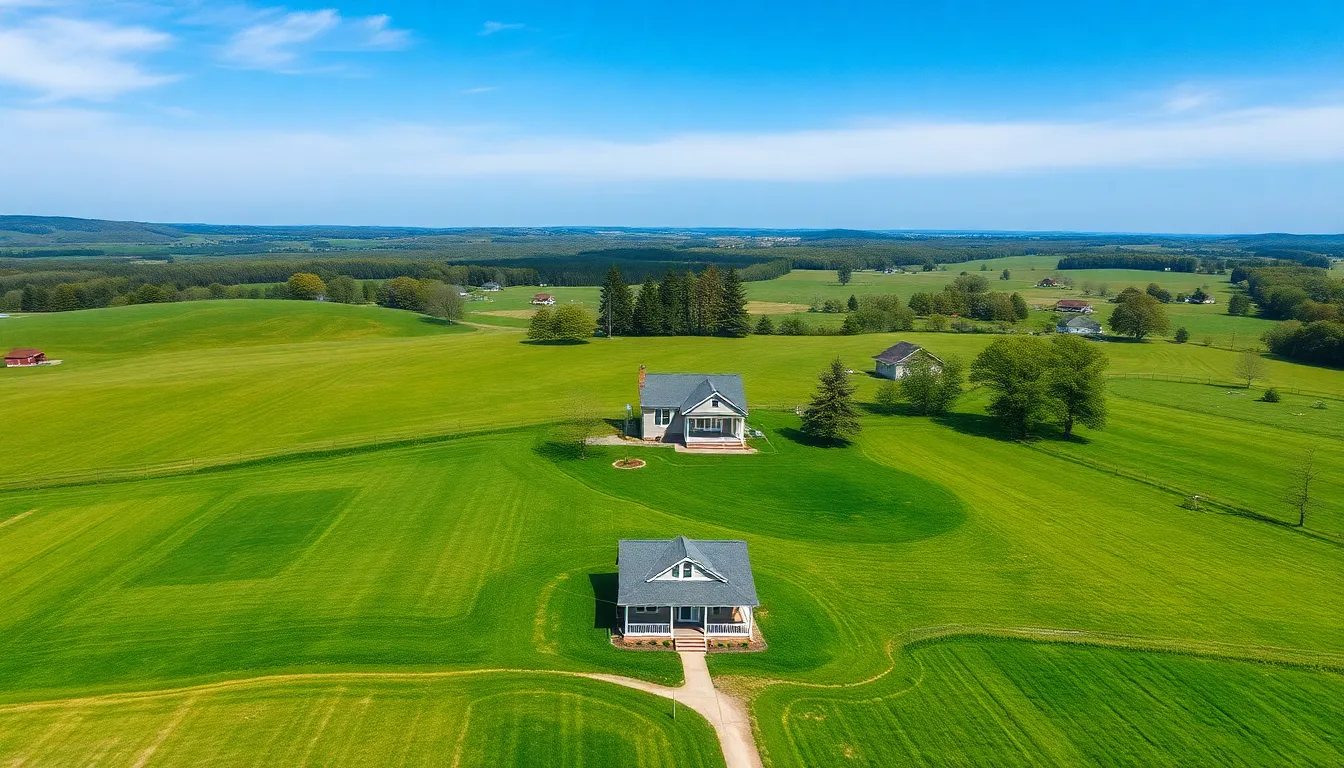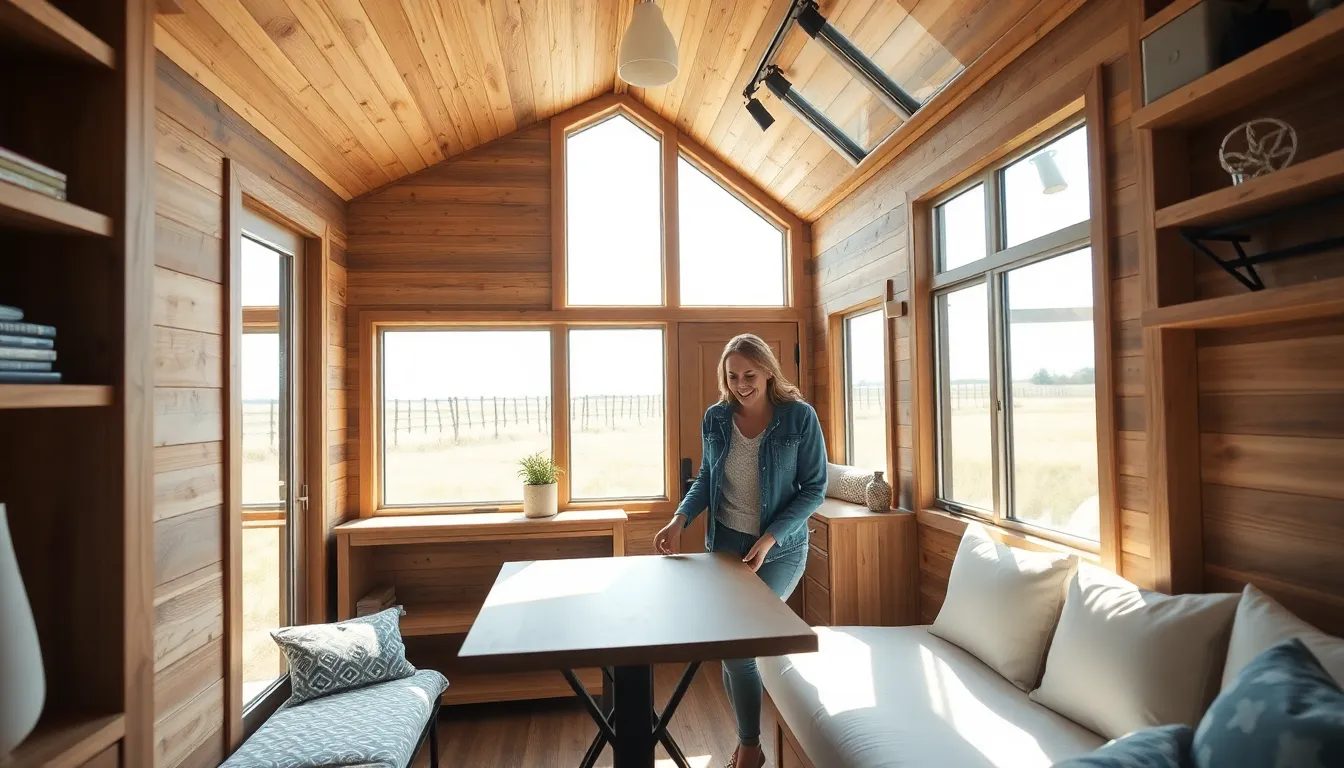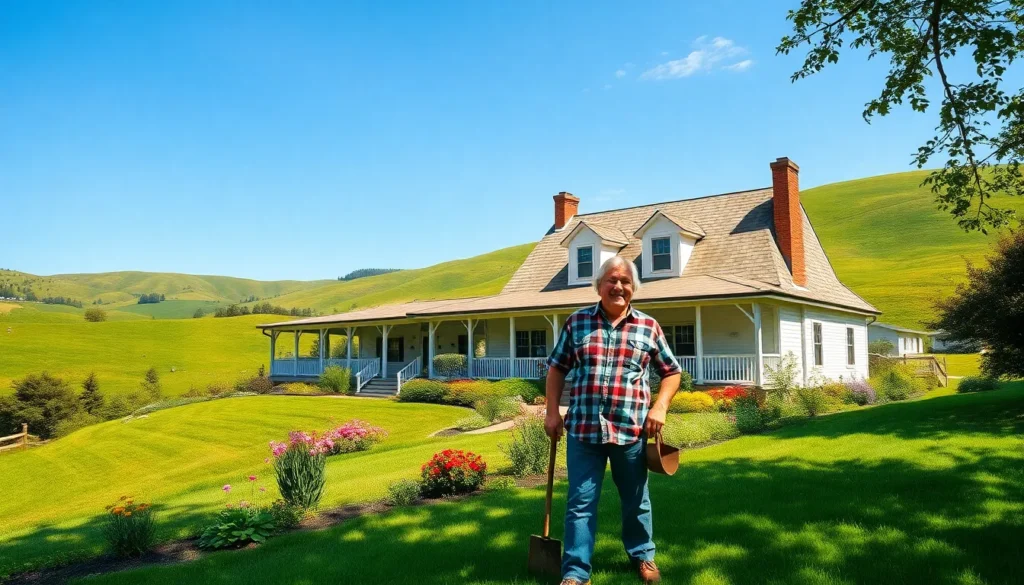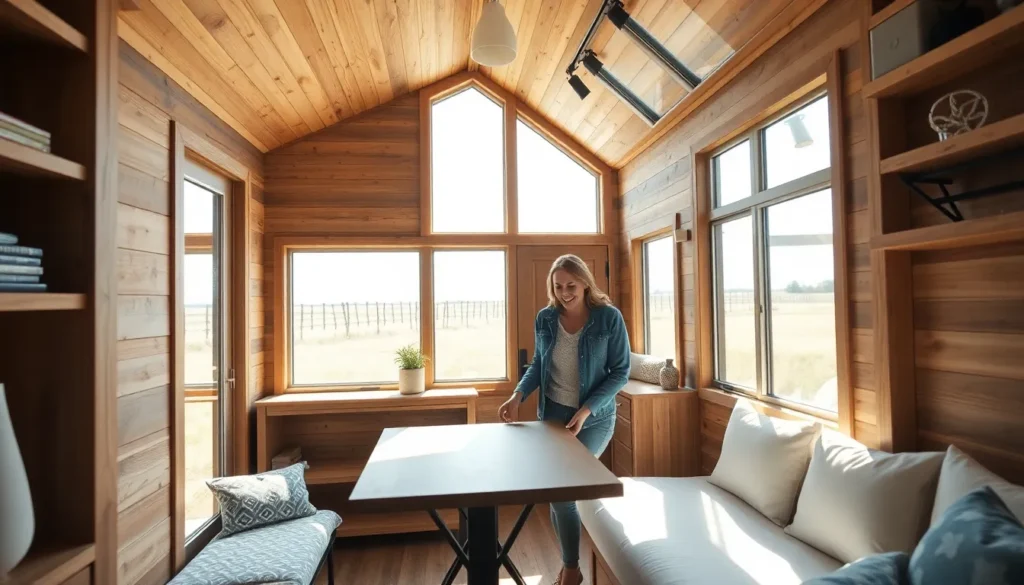Navigating the world of home loans can be daunting, especially for those looking to settle in rural areas. Rural home loans offer unique opportunities, tailored to meet the needs of individuals and families eager to embrace the charm and tranquility of countryside living. With lower property prices and expansive land options, rural areas present an attractive alternative to urban environments.
Understanding the ins and outs of rural home loans is crucial for prospective buyers. From government-backed programs to local lending options, these loans can make homeownership more accessible than ever. As more people seek the peace of rural life, it’s essential to explore how these financial tools can turn dreams of a serene home into reality.
Table of Contents
ToggleOverview of Home Loans Rural
Home loans for rural properties provide unique financing solutions tailored for individuals and families aiming to purchase homes in countryside locations. These loans often come with favorable terms due to government support, especially in the United States.
Types of Rural Home Loans
- USDA Loans: USDA loans are backed by the U.S. Department of Agriculture. They target low to moderate-income borrowers purchasing homes in eligible rural areas. These loans eliminate the need for a down payment and offer lower interest rates compared to conventional loans.
- FHA Loans: Federal Housing Administration (FHA) loans serve borrowers with lower credit scores and smaller down payments. These loans can apply to rural properties, allowing access to affordable homeownership for various demographics.
- Conventional Loans: Many banks and credit unions offer conventional loans with flexible terms for rural home buyers. These loans may require a higher credit score and down payment but often come with competitive interest rates.
Eligibility Criteria
Eligibility for rural home loans varies by lender and loan type. Key criteria include:
- Location: Properties must be located in designated rural areas.
- Income Limits: Borrowers’ income must fall within specific limits. USDA loans usually define these limits based on family size and location.
- Credit Score: Minimum credit score requirements apply, typically ranging from 580 to 640, depending on the loan product.
Benefits of Rural Home Loans
- Lower Property Costs: Home prices in rural areas often remain lower than in urban markets, making homeownership more attainable.
- Increased Land Availability: Rural properties frequently come with larger plots of land, offering more outdoor space and opportunities for gardening or farming.
- Community Atmosphere: Rural living provides a close-knit community feel, with access to outdoor recreational activities and a slower pace of life.
Challenges in Securing Rural Home Loans
Navigating the rural home loan landscape can present challenges, including:
- Limited Lender Options: Fewer lenders specialize in rural home loans, potentially restricting financing options.
- Appraisal Difficulties: Appraisals on rural properties often pose challenges due to fewer comparable sales in the area, impacting loan approval.
- Distance from Urban Amenities: Rural properties might be situated farther from essential services, which can be a consideration for potential buyers.
Understanding the landscape of rural home loans empowers buyers to explore their options effectively, facilitating a smoother path to homeownership in rural settings.
Types of Home Loans Available

Several home loan types cater specifically to rural buyers, each offering unique benefits. Understanding these options can significantly aid potential homeowners in choosing the right path to financing.
FHA Loans
FHA loans, or Federal Housing Administration loans, serve as excellent options for rural homebuyers with lower credit scores. These loans require a down payment as low as 3.5%. Eligible properties include single-family homes and certain multi-family units. Borrowers benefit from competitive interest rates and flexible qualifying requirements, making homeownership more accessible for those who might struggle with conventional financing.
USDA Loans
USDA loans, backed by the United States Department of Agriculture, target low to moderate-income individuals seeking residences in designated rural areas. No down payment is required, which significantly lowers the upfront cost of purchasing a home. USDA loans come with reduced mortgage insurance premiums and favorable interest rates. Additionally, these loans’ eligibility extends to specific property locations and household income limits, encouraging investment in rural communities.
VA Loans
VA loans, offered by the Department of Veterans Affairs, cater to veterans, active-duty service members, and some surviving spouses looking to finance homes in rural regions. These loans often require no down payment and feature competitive interest rates. Additionally, VA loans include favorable terms such as no private mortgage insurance requirements. Eligible properties include single-family homes and certain manufactured homes, enhancing accessibility for rural buyers.
Benefits of Home Loans in Rural Areas
Home loans in rural areas offer significant advantages for buyers, promoting affordable homeownership in serene surroundings. These benefits enhance the appeal of investing in rural properties.
Lower Interest Rates
Lower interest rates frequently accompany rural home loans. Government-backed programs, like USDA and VA loans, typically offer more favorable terms than conventional loans. These reduced rates directly decrease monthly mortgage payments, allowing buyers to allocate funds elsewhere. Moreover, potential savings on total interest paid over the loan term contribute to long-term financial stability.
Special Assistance Programs
Special assistance programs support rural homebuyers, making ownership more attainable. USDA loans target low to moderate-income households, offering no down payment and attractive interest rates. FHA loans cater to individuals with lower credit scores, enabling homeownership with a minimal down payment. Additionally, local and state programs may offer grants or aids tailored to rural residents, focusing on improving community development and ensuring sustainable homeownership.
Eligibility Criteria for Rural Home Loans
Rural home loans have specific eligibility criteria that potential borrowers must meet. Understanding these requirements can streamline the loan application process and enhance the chances of approval.
Income Requirements
Income requirements vary by loan type and lender. USDA loans typically target low to moderate-income households, and applicants must fall within specified limits based on family size and geographic area. For example, USDA programs might allow a maximum income of up to 115% of the median income in the specific rural area. FHA loans have no strict upper limit, but a borrower’s income must support the overall debt-to-income ratio, which usually shouldn’t exceed 43%. VA loans generally don’t impose income limits, but sufficient income must prove the ability to repay the borrowed amount.
Credit Score Requirements
Credit score requirements differ among loan programs. USDA loans may require a minimum score of 640 for automatic approval, while FHA loans accept scores as low as 580, allowing for a 3.5% down payment. Those with credit scores between 500 and 579 may qualify but must provide a larger down payment of at least 10%. VA loans typically don’t have a specified minimum score; however, lenders often prefer scores above 620 to enhance loan approval odds. Maintaining a good credit score improves access to favorable interest rates and terms in rural home loans.
Challenges of Securing Home Loans in Rural Areas
Securing home loans in rural areas presents unique challenges that potential buyers must navigate. Understanding these hurdles helps buyers prepare for the process effectively.
Limited Lender Options
Limited lender options can significantly impact rural homebuyers. Many national lenders focus primarily on urban and suburban markets, leaving fewer choices for those in rural areas. Local credit unions and community banks may offer rural loan products, yet not all rural areas have access to these institutions. This limited presence can lead to less competitive interest rates and loan terms, making it essential for buyers to thoroughly research available lenders in their region.
Geographical Restrictions
Geographical restrictions pose another challenge for borrowers in rural areas. Many home loan programs, such as USDA loans, require properties to be located in designated rural zones. These designations often exclude desirable rural locations that might not fit traditional definitions of rurality. Buyers may face difficulties identifying suitable properties within eligible zones, limiting their options. Additionally, appraisals in rural areas can become challenging due to lack of comparable properties, leading to delays or complications in obtaining financing.
Navigating the world of rural home loans can open doors to a fulfilling lifestyle in the countryside. With various financing options available it’s crucial for potential buyers to familiarize themselves with the specific programs tailored for rural properties.
Understanding eligibility criteria and the unique challenges of securing these loans empowers buyers to make informed decisions. By leveraging government-backed programs and local lending solutions individuals can find opportunities that align with their financial goals.
Ultimately the dream of homeownership in a serene rural setting is within reach for those willing to explore the possibilities.













